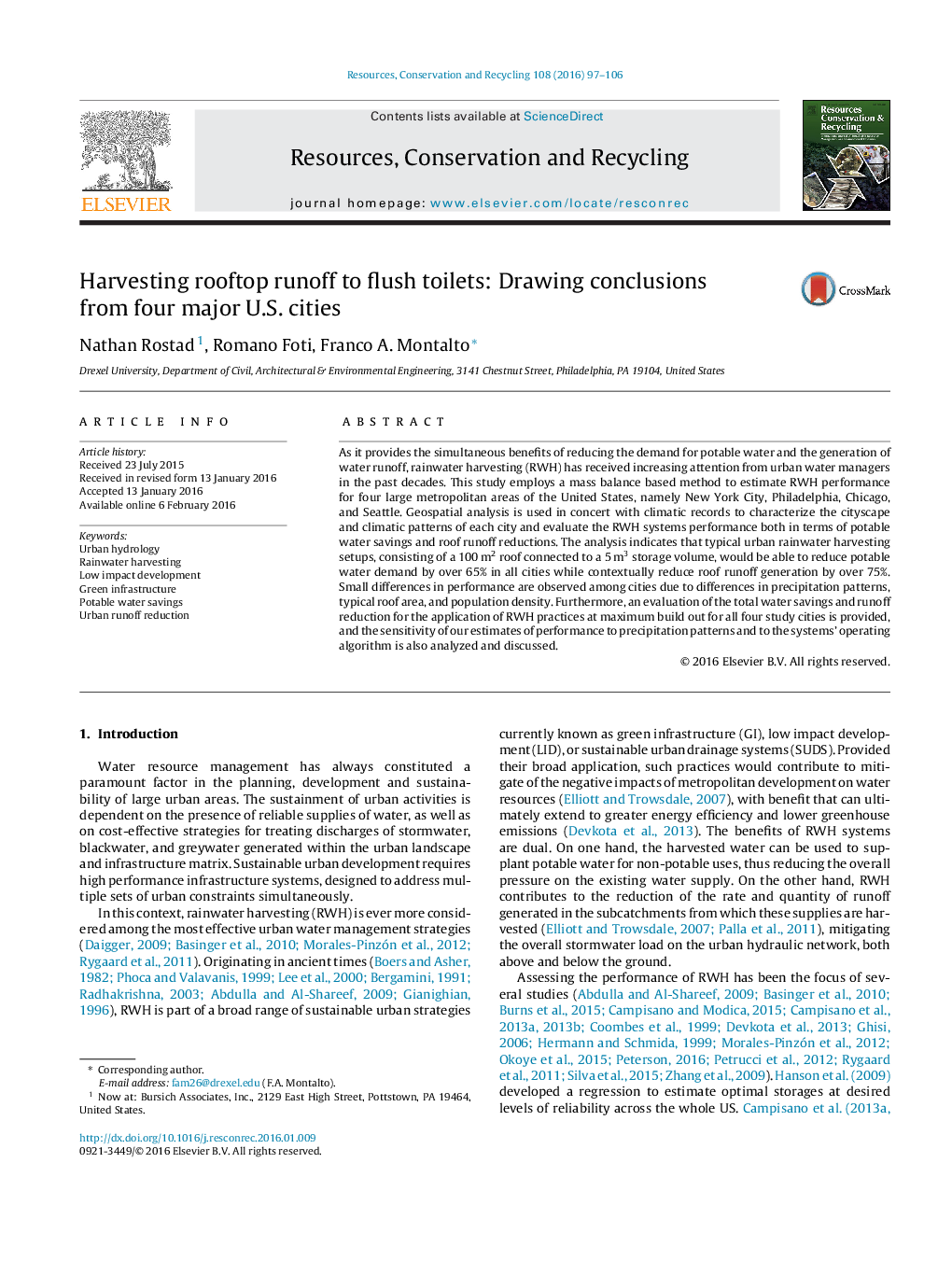| کد مقاله | کد نشریه | سال انتشار | مقاله انگلیسی | نسخه تمام متن |
|---|---|---|---|---|
| 1062718 | 1485683 | 2016 | 10 صفحه PDF | دانلود رایگان |
• Mathematical simulation of rainwater harvesting (RWH) for toilet flushing.
• Simulation of rainwater reuse in Chicago, New York City, Philadelphia, and Seattle.
• Results discussed in terms of system reliability and runoff reduction.
• A typical family residence can meet all toilet flushing demand on 67–81% of days.
As it provides the simultaneous benefits of reducing the demand for potable water and the generation of water runoff, rainwater harvesting (RWH) has received increasing attention from urban water managers in the past decades. This study employs a mass balance based method to estimate RWH performance for four large metropolitan areas of the United States, namely New York City, Philadelphia, Chicago, and Seattle. Geospatial analysis is used in concert with climatic records to characterize the cityscape and climatic patterns of each city and evaluate the RWH systems performance both in terms of potable water savings and roof runoff reductions. The analysis indicates that typical urban rainwater harvesting setups, consisting of a 100 m2 roof connected to a 5 m3 storage volume, would be able to reduce potable water demand by over 65% in all cities while contextually reduce roof runoff generation by over 75%. Small differences in performance are observed among cities due to differences in precipitation patterns, typical roof area, and population density. Furthermore, an evaluation of the total water savings and runoff reduction for the application of RWH practices at maximum build out for all four study cities is provided, and the sensitivity of our estimates of performance to precipitation patterns and to the systems’ operating algorithm is also analyzed and discussed.
Journal: Resources, Conservation and Recycling - Volume 108, March–April 2016, Pages 97–106
